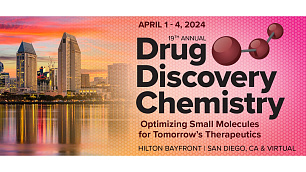ChemDiv Posters At “EFMC-ASMC’19”: Macrocyclic Peptidomimetics And Library of Covalent Inhibitors
During “International Symposium EFMC-ASMC’19” in Athens, September 1-5, 2019 Head of Chemistry Dr. Volodymyr Kysil will represent two posters:Macrocyclic Peptidomimetics: Library Design and SynthesisLibrary of Covalent Inhibitors: Design and Synthesis If you work in this area and/or are interested in these topics, please make stop by our posters:
- POSTER SESSION 1: Tuesday, September 3 at 13:30-14:30 – poster 153
- POSTER SESSION 2: Wednesday, September 4 at 13:30-14:30 – poster 152
Macrocyclic Peptidomimetics: Library Design and SynthesisVolodymyr Kysil Sergey Tkachenko [1]; Anokhina Irina [2]; Igor Rezekin [2]; Vladislav Parchinskiy [2][1] ChemDiv, Inc.12760 High Bluff Dr. Suite 370, San Diego, CA 92130, USA[2] Chemical Diversity Research Institute,2a Rabochaya Str., Khimki, Moscow Reg., 114401 Russiavkysil@chemdiv.com
Remarkably growing interest toward medium- and large-sized heterocycles is not accidental since it is closely linked with the growing interest toward protein-protein interactions (PPI) as promising therapeutic targets and therefore small molecule PPI modulators. On the other side, set of synthetic tools capable of producing large libraries of macrocyclic compounds is rather limited.We have used two methodologies for the design and synthesis of macrocyclic peptidomimetics library. One of them includes ring expansion employing Bormann-Wasserman strategy (BWS) and allows synthesizing 10-12-membered lactams. This gives us access to unique functionally enriched, spiro- and fused scaffolds with incorporated (un)substituted b-alanine moiety. The other one is based on click-macrocyclization of linear peptidomimetics bearing acetylene and azide functionalities at the ends to provide 14-22-membered macrocyclic peptidomimetics. Both methodologies have been applied for the synthesis of macrocyclic scaffolds with additional functionalities applicable for further diversification. This allowed us to synthesize successfully multi-thousand-member library of macrocyclic peptidomimetics. Library of Covalent Inhibitors: Design and SynthesisVolodymyr Kysil [1], Alexei Pushechnikov [1], Irina Kuznetsova [2], Vladislav Parchinskiy [2] [1] ChemDiv, Inc.12760 High Bluff Dr. Suite 370, San Diego, CA 92130, USA[2] Chemical Diversity Research Institute,2a Rabochaya Str., Khimki, Moscow Reg., 114401 Russiavkysil@chemdiv.com
Historically, covalent drugs have made a major impact on human health. The list includes many important therapeutics such as aspirin, penicillin, cephalosporin, fosfomycin, omeprazole, clopidogrel, and others. However, during the last decade of the 20-th century the drug discovery research has been revolving around Lipinski’s rules while systematically discarding covalent inhibitors. Nevertheless, a covalent mechanism of action has numerous pharmacological advantages including enhanced potency, selectivity, and prolonged duration of action.For the last decade or so, there was a steadily growing interest in covalent binders. The number of citations of covalent inhibitors in the scientific literature have almost quintupled since 2009. Furthermore, covalent binders are becoming increasingly important in fragment-based drug discovery. Following this trend, we have synthesized the rationally designed diverse library of covalent inhibitors.The library was designed for covering the most frequent warheads currently used as covalent reactive groups (CRG) such as chloroacetyl, 2-chloropropanoyl, acryloyl, 1-prop-2-ynoyl, 1-but-2-ynoyl, and others. A diverse set of unique and/or rare amines (non-covalent units, NCU) has been picked from our collection of the stock-available building blocks. Criteria for NCU selection in the library design will be presented.Over 2000 covalent binders have been synthesized so far, and the number of library members continues to grow. Importantly, over 900 library members meet fragment criteria for their NCUs. 

